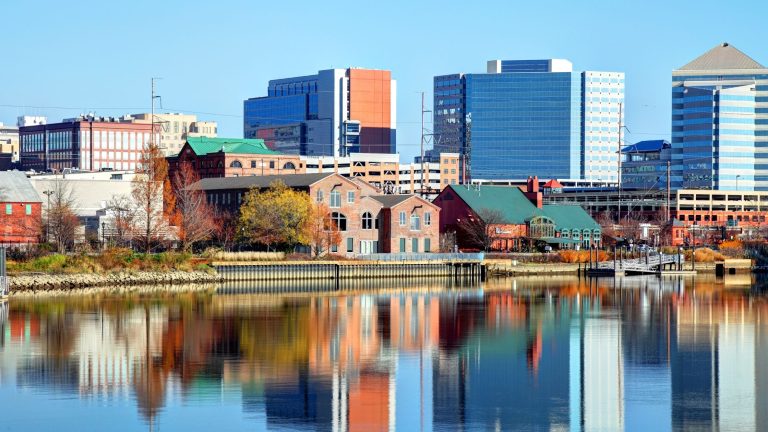Barn homes have come a long way from their traditional countryside origin to the chic, contemporary structures you now see gracing architectural designs. This subsection will explore how barn homes have evolved in contemporary architecture and why they are an excellent choice for family living.
The Evolution of Barn Homes in Contemporary Architecture
Barn homes started as functional structures used for housing livestock and storing farming equipment and fodder. But they’ve now taken center stage as inspired architectural designs that significantly impact modern home trends. Newer versions of barn homes known as “barndominiums” combine durability, spaciousness, and style while continuing to celebrate their classic and rustic elements.
Today’s barn-style houses incorporate pitched ceilings, exposed wooden beams, and rustic touches that draw from traditional farmhouses while integrating modern design elements. Architects are now transforming old barns into luxurious family homes and creating contemporary barn-inspired residences that cater to an audience looking for unique, spacious, and sustainable living spaces.
One of the defining features of barn homes is their adaptability. With ample open space, these structures allow for diverse customization options. A barn home can be reimagined as a cozy family abode, an impressive entertaining space, or a functional live-work space, meeting the needs of various lifestyles.
Pole barn homes are another variation of the barn home concept that emphasizes durability, affordability, and swift construction time. A pole barn home uses strong, simple framing and a metal roof to create a well-suited structure for demanding climates. Pole barn homes are increasingly popular for their energy efficiency, low maintenance, and cost-effective construction.
Part 1: Understanding Barn Homes

Defining Barn Homes
So, what exactly are barn homes? Barn homes are residences that originated as or are inspired by buildings that house livestock or store fodder or farm equipment. They come in many shapes and forms and are now becoming popular for their unique designs and spacious interiors.
Historical Background and Modern Interpretation
Historically, barn homes were built out of necessity to provide shelter for livestock and storage of farming equipment. Over the years, interest in barn homes has grown, and they have evolved into living spaces that maintain the essence of their rustic origins while incorporating modern amenities. As a result, they now combine the best of both worlds – the past and present – for a unique, cozy living experience.
Key Characteristics of Barn Homes
What sets barn homes apart from traditional homes? Here are some key features:
- Open Floor Plans: Barn homes often have open floor plans that provide ample space and flexibility for you to create your ideal living area.
- High Ceilings: Barn homes usually have high ceilings, which can be accentuated with exposed beams and trusses, creating a sense of spaciousness.
- Post-Frame Construction: Most barn homes are built using post-frame construction, which makes them structurally sound, energy-efficient, and generally more affordable than conventional homes.
Different Styles of Barn Homes
There are several styles of barn homes to choose from, including:
- Barndominiums: A mix of barn and condominium, these structures often incorporate metal and timber framing for a modern touch.
- Timber Frame Barn Homes: These homes feature classic timber frames and post-and-beam construction, perfect for those who appreciate traditional craftsmanship.
- Pole Barn Homes: Built using post-frame construction, pole barn homes offer a simple, durable, and budget-friendly option.
Classic vs. Modern Barn Home Designs
While classic barn homes embrace their rustic heritage with features like timber framing, exposed beams, and natural materials, modern barn homes often showcase sleek lines, contemporary finishes, and innovative building materials. Ultimately, the choice between classic and modern design comes down to your personal preferences and vision for your barn home.
Regional Variations in Barn Home Architecture
Different regions may have distinct architectural influences reflected in their barn homes. For example, a barn home in New England might feature a weathered exterior and traditional design elements, while a barn home in the Southwest could include stucco siding and a Spanish-influenced design. So, when exploring barn home options, it’s essential to consider regional variations and how they might affect your dream home’s overall look and feel.
Part 2: Designing Your Barn Home

Foundations of Barn Home Construction
When designing your barn home, starting with a solid foundation is essential. Barn homes generally utilize either post and beam construction or pole barn house construction. Post and beam construction uses thick, heavy timbers to create a load-bearing skeleton, providing more interior space and design flexibility. Pole barn house construction, on the other hand, relies on structural posts driven into the ground, which makes for faster construction and lower costs.
Material Choices for Durability and Style
Choosing the right materials is crucial for creating a durable and stylish barn home. Opt for high-quality, energy-efficient windows and doors to ensure the longevity of your home. Timber frames and wood siding are common options for barn-style homes, providing both structural support and a rustic appearance. Combining natural elements like wood and stone adds an authentic touch to your barn home.
Your barn house plans should include open floor plans, allowing flexibility in interior design. Incorporate large windows to provide ample natural light, and consider various design elements such as exposed beams, hardwood flooring, and statement fixtures to enhance the overall aesthetic.
Landscaping and Outdoor Living Spaces
Don’t forget about landscaping and outdoor living spaces to complete your barn home’s vision. Including a porch or patio in your barndominium plans can provide additional outdoor space to relax, entertain, and enjoy the surrounding views. Incorporate elements like pergolas, patios, gardens, and walkways to enhance your outdoor living experience. Consider the connection between your barn house and the landscape, utilizing hardscaping and softscaping techniques to create seamless transitions.
Overall, designing your barn home involves careful planning and attention to detail. From the construction method to material choices and incorporating outdoor living spaces, you can create a unique and comfortable barn home tailored to your needs and preferences.
Part 3: Practical Aspects of Living in a Barn Home

Eco-Friendly Materials and Practices
Living in a barn home offers the opportunity to use eco-friendly materials and practices in your design. You may choose to include features like timber frame construction, reclaimed wood, and sustainable insulation options like spray foam. The use of these materials not only helps to reduce your environmental impact but also adds to the unique charm and appeal of your barn home.
Navigating Legal Requirements
Before building your barn home, it’s essential to familiarize yourself with the local zoning regulations and building codes. This will ensure that your barn house plans comply with the legal requirements and save you from headaches down the road. Be prepared to navigate permits, inspections, and other regulatory aspects to protect your investment and ensure the safety of your home.
Maintenance and Upkeep
Just like any other home, a barn home requires regular maintenance and upkeep. With their unique design features, such as gambrel roofs and exposed beams, you may need to take extra precautions to protect them from weather and pests. Additionally, metal barndominiums have the advantage of requiring less maintenance and being more durable than their wooden counterparts.
Common Challenges and Solutions
One common challenge of living in a barn home is balancing the open floor plan with your need for privacy and personal space. You might consider adding sliding barn doors or partitions to create distinct areas within your home. Another challenge may arise in efficiently heating or cooling your barn-style house due to the high ceilings. Efficient insulation, zoning systems, and energy-efficient windows can help to address this issue while maintaining the aesthetics and charm of your home.
Frequently Asked Questions
What are the benefits of prefab barn homes?
Prefab barn homes offer several advantages for homeowners. First, you can save time and money on construction since they are built off-site and then assembled on your property. This also means fewer construction-related disruptions to your daily life. Also, prefab homes are often more energy-efficient, as they are built with modern materials and techniques, helping lower your utility bills and reduce your carbon footprint.
How do you design a small and efficient barn home?
When designing a small and efficient barn home, keep these tips in mind:
- Maximize your floor plan by using an open-concept layout, making your living environment feel more spacious.
- Incorporate plenty of natural light and ventilation to create a healthy and vibrant atmosphere.
- Opt for built-in storage solutions to help declutter your space.
- Choose energy-efficient materials and appliances to save on utility costs.
- Use light colors and functional furnishings that can serve multiple purposes.
Are metal barn homes more cost-effective?
Metal barn homes can be more cost-effective than traditional stick-built homes due to several factors, such as lower labor and material costs. They are also low maintenance and generally more durable, offering long-term savings in upkeep and repair expenses.
What options are available in pole barn house kits?
Pole barn house kits come in a variety of styles, sizes, and designs. Some common options include:
- Different floor plans and layouts, ranging from simple, single-story designs to more elaborate multi-level structures.
- A wide array of exterior and interior finish options.
- Customizable features such as windows, doors, insulation, and roofing materials.
- Pre-designed packages to suit specific purposes, such as workshop spaces, garages, or even additional living areas.
What features can make my barn home visually appealing?
To enhance the visual appeal of your barn home, consider integrating these features:
- Large windows and doors allow for abundant natural light and create a strong indoor-outdoor connection.
- Exposed beams, trusses, and other architectural elements showcase the barn’s rustic nature.
- A mix of contemporary and traditional design elements that blend harmoniously.
- Use of warm, natural materials such as wood, stone, and metal to create inviting and cozy spaces.
- Thoughtful landscaping that complements the barn’s aesthetic and enhances its surroundings.






